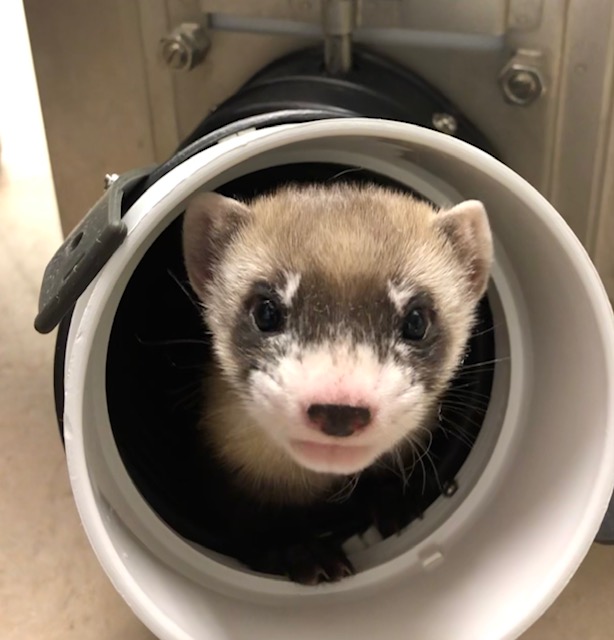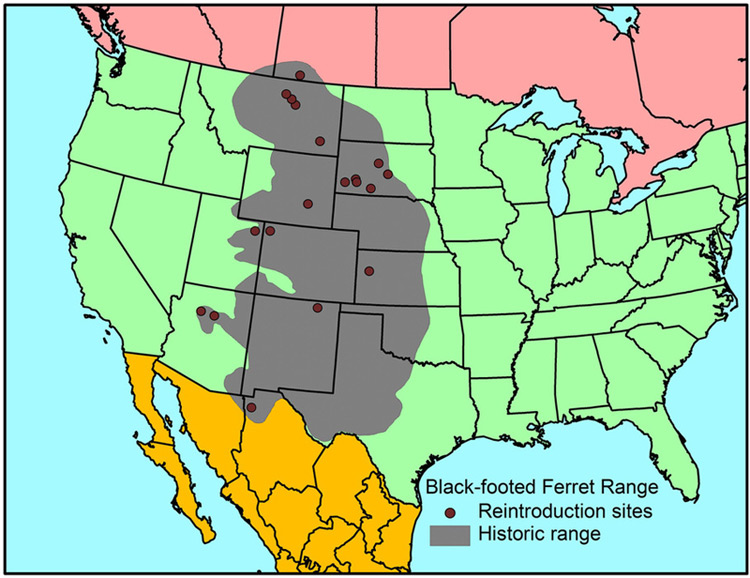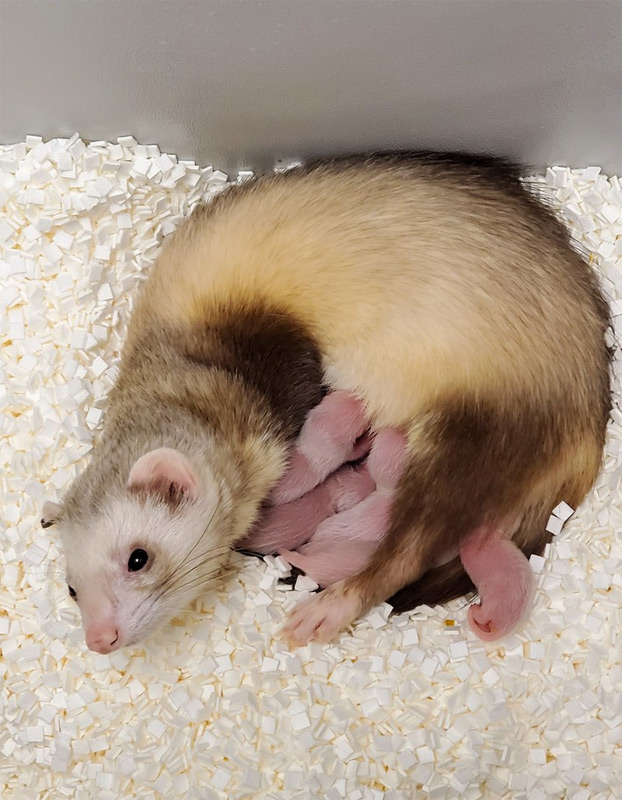
22nd February 2021 First cloning of endangered American animal Scientists in the U.S. have successfully cloned an endangered black-footed ferret, using DNA from an identical animal frozen since 1988.
The U.S. Fish and Wildlife Service (USFWS), in partnership with conservationists, zoos, and a biotech company, has announced the first cloning of an endangered animal in America. Pictured here is "Elizabeth Ann" – a black-footed ferret, born on 10th December 2020. She was created from the frozen cells of "Willa" – an identical ferret that lived more than 30 years ago. The scientific breakthrough is a major boost for recovery efforts of this rare animal. Historically abundant across the Great Plains, declining populations throughout the 20th century led to it being declared "extinct in the wild" in 1996, surviving only in captivity. The International Union for Conservation of Nature (IUCN) removed the animal from its Red List in 2008, following reintroduction efforts, but it remains "endangered" and confined to a handful of sites.
In 2018, the USFWS issued the first-ever recovery permit for cloning research of an endangered species. This allowed the initiation of genetic analyses and proof of concept trials by a conservation group, Revive & Restore. Alongside that work, biotech company ViaGen Pets & Equine demonstrated recent advancements in cloning processes, successfully creating embryos from the cell line (frozen since 1988) and implanting them in a domestic ferret surrogate. "The ability to utilise our proven Somatic Cell Nuclear Technology to enable the cloning of such an ecologically important species is a great privilege," said ViaGen Pets and Equine President, Blake Russell. The surrogate mother was transferred from ViaGen Pets & Equine to the National Black-Footed Ferret Conservation Center (NBFFCC) mid-gestation to give birth to the cloned kit. The NBFFCC staff's extensive experience with breeding and caring for black-footed ferrets ensured the safe arrival of the first U.S. endangered species clone. This research is still in its early stages, and scientists continue to closely monitor the young kit for viability and other developments. Elizabeth Ann and her surrogate mother are kept separate from other breeding black-footed ferrets, and she will live her life at the NBFFCC as additional research is completed. The team is working to produce more black-footed ferret clones in the coming months as part of continuing research.
Today, all black-footed ferrets are descended from just seven individuals, resulting in unique genetic challenges to recovering this species. Without an appropriate level of genetic diversity, a species often becomes more susceptible to diseases and genetic abnormalities, as well as limited adaptability to conditions in the wild and a decreased fertility rate. Cloning may help to address genetic diversity and disease resilience barriers to support habitat conservation and reestablishment of additional populations in the wild. A genomic study revealed Willa's genome possessed three times more unique variations than the living population. Therefore, if Elizabeth Ann successfully mates and reproduces, she could provide unique genetic diversity to the species. "We've come a long way since 2013 when we began the funding, permitting, design and development of this project with the U.S. Fish and Wildlife Service," said Ryan Phelan, Revive & Restore's Executive Director. "Genomics revealed the genetic value that Willa could bring to her species. But it was a commitment to seeing this species survive that has led to the successful birth of Elizabeth Ann. To see her now thriving ushers in a new era for her species and for conservation-dependent species everywhere. She is a win for biodiversity and for genetic rescue." "Maintaining and increasing wild populations and suitable habitat continues to be essential for black-footed ferret recovery and remains a priority for the Service," said Noreen Walsh, Director of the USFWS's Mountain-Prairie Region. "Successful genetic cloning does not diminish the importance of addressing habitat-based threats to the species or the Service's focus on addressing habitat conservation and management to recover black-footed ferrets."
Comments »
If you enjoyed this article, please consider sharing it:
|









